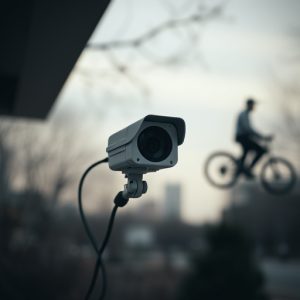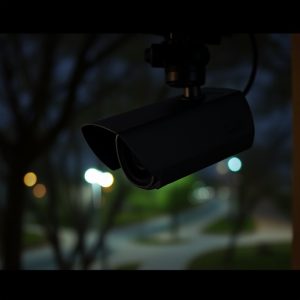Uncovering Hidden Threats: Detecting Wireless Spy Cameras Using Smartphones & Cloud Storage
Wireless spy cameras, hidden in everyday objects, offer enhanced security but pose significant priva…….
Wireless spy cameras, hidden in everyday objects, offer enhanced security but pose significant privacy risks. They capture and transmit video wirelessly to smartphones or cloud storage, enabling remote access and real-time monitoring. While useful for surveillance, their misuse can lead to severe privacy breaches. Consumers should remain vigilant, use smartphone apps for detection, and be aware of legal obligations to avoid unethical uses of these devices.
Wireless spy cameras have become increasingly prevalent, leveraging cloud storage to operate discreetly. This article delves into the growing concern surrounding these devices, exploring their techniques and tools for detection using smartphone technology. We dissect the role of cloud storage in facilitating their operations and delve into legal and ethical considerations that navigate gray areas. Understanding these elements is crucial for empowering individuals to protect their privacy in today’s digital landscape.
- Understanding Wireless Spy Cameras and Their Prevalence
- The Role of Cloud Storage in Spy Camera Operations
- Detecting Spy Cameras: Techniques and Tools for Smartphone Users
- Legal and Ethical Considerations: Navigating the Gray Areas
Understanding Wireless Spy Cameras and Their Prevalence
Wireless Spy Cameras have become increasingly prevalent in today’s digital age, presenting a unique challenge for consumers and authorities alike. These tiny yet powerful devices are designed to operate discreetly, often hidden within everyday objects like clocks, plants, or even light bulbs, making them difficult to detect. They capture and transmit video footage wirelessly to a remote device, usually a smartphone, via internet connection or cloud storage.
This technology has both positive and negative implications. On one hand, it offers enhanced security and surveillance capabilities for homes and businesses. On the other hand, its misuse can lead to severe privacy breaches. With the widespread availability of Wireless Spy Cameras, it’s crucial for individuals to be vigilant and educated about potential hidden cameras in public spaces or private properties, ensuring their personal information remains secure.
The Role of Cloud Storage in Spy Camera Operations
Wireless spy cameras have revolutionized surveillance, but their operation heavily relies on cloud storage for efficient data management and accessibility. By uploading captured footage to the cloud, users can remotely access videos from anywhere with an internet connection, ensuring round-the-clock monitoring. This is particularly useful in scenarios where direct device-to-device transfer may be impractical or time-consuming.
Cloud storage also facilitates seamless video analysis and motion detection, as processed data can be quickly synced and shared among multiple devices. For instance, suspicious activities detected by a spy camera can be immediately flagged and reviewed, enhancing security measures. Moreover, cloud-based systems offer scalability, allowing users to effortlessly expand their network of wireless spy cameras as needed.
Detecting Spy Cameras: Techniques and Tools for Smartphone Users
Detecting spy cameras has become an increasingly important skill in today’s digital age, where wireless spy cameras can be hidden almost anywhere. Smartphone users now have access to a variety of tools that can help them identify these covert devices. One of the primary methods is through visual inspection using your phone’s camera. By carefully examining corners, gaps, and unusual objects, you might spot a tiny lens or an irregular shape indicative of a spy camera.
Advanced techniques involve utilizing smartphone apps that can analyze light patterns and detect hidden cameras’ infrared or UV emissions. These apps often connect to the device’s cloud storage to compare and cross-reference data with known patterns of spy camera signatures. With regular updates, these tools become more effective in identifying modern wireless spy cameras, offering users a robust defense against privacy breaches.
Legal and Ethical Considerations: Navigating the Gray Areas
The rise of wireless spy cameras, accessible via phone apps, has sparked a debate around legal and ethical boundaries. While these devices offer enhanced surveillance capabilities, their unauthorized use can infringe on privacy rights, especially in public spaces. Many countries have laws protecting individuals from unwarranted observation, with regulations varying based on the type of device, location, and purpose of recording.
Using spy cameras equipped with cloud storage to secretly monitor activities raises ethical concerns. It’s essential for users to be aware of their legal obligations and respect others’ privacy. Transparency and consent are key; capturing footage without someone’s knowledge can constitute a breach of trust and potentially lead to serious consequences, especially when shared or used for malicious purposes.
Wireless spy cameras, facilitated by cloud storage, have become a prevalent concern in our digital age. Understanding their operations and detecting these devices is crucial for safeguarding privacy. Smartphone users now possess powerful tools to identify hidden cameras using advanced techniques. However, it’s essential to balance this knowledge with legal and ethical considerations, ensuring we navigate the gray areas responsibly. By staying informed and utilizing available resources, individuals can protect their personal spaces from unwanted surveillance.


